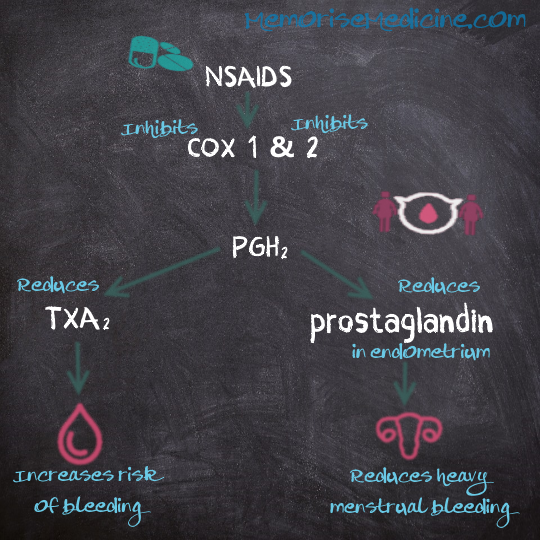One of the first things we learn and remember about NSAIDs (e.g. ibuprofen, diclofenac, naproxen and mefenamic acid) is they can be used for pain (especially due to inflammation) and fever relief.
NSAIDs’ mechanism of COX-1 inhibition produces antiplatelet effects. This explains the increase in bleeding risk and GI ulceration or bleeding. As students, this increase bleeding risk gets ingrained in us and is further reinforced when counselling patients on it.
It then may seem counter-intuitive, that NSAIDs can also be used for menorrhagia (heavy menstrual bleeding). They can reduce blood loss by 29–48% and help with dysmenorrhoea (period pain). Other drug treatments such as tranexamic acid and oral progestin reduce blood loss by 47% and 83% respectively.
But how can NSAIDs both increase bleeding risk and reduce blood loss?
NSAIDs decrease prostaglandin concentrations in the endometrium (the lining of the uterus or womb); women with menorrhagia are found to have higher prostaglandin levels in their endometrium. And this higher prostaglandin concentration is thought to be one of the reasons menorrhagia occurs.

If you like this post you might like to check out our website and book
MemoriseMedicine.Com. 100s of medical flashcards and study tips. Perfect for part-1 of the intern oral exam. 100% FREE!
‘Passing The Pharmacy Australia Intern Oral Exam: The Easy way.’ Amazon bestseller. Study tips. Exam strategies. 16 practice exams. Available here, Amazon Affiliate link: https://amzn.to/2YEyOfs
Affiliate Disclosure: As an Amazon Associate I earn from qualifying purchases. This comes at no charge to you. And helps with the development of Memorise Medicine.
Originally posted on Instagram: